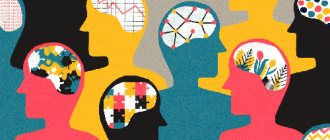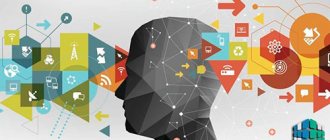Mentality is what determines the way of thinking, the perception of the world, and combines the mental and spiritual.
Often, when something happens that goes beyond understanding, it is justified by mentality. We can talk about some traditions and holidays, as well as about the bloodiest massacres.
Photo by Joshua Fuller on Unsplash
There is no need to look for logic in mentality. Mentality is beyond the bounds, something at the level of feelings and emotions, it simply exists. Also, mentality is not always characteristic of one person; often mentality or mentality is a concept that unites entire nations.
In psychology, mentality is a mirror of the human psyche: the categories with which he thinks, his way of life, interaction with the outside world. Actions, actions and habits determine a person’s mentality. If we give simple examples of mentality, we can recall the Russian tradition “Farewell to Winter.” Or Maslenitsa.
First, people bake pancakes, and then have fun festivities, ending with the ritual burning of a huge effigy of winter. And somewhere in Zimbabwe they had never heard of such a tradition, and they might have been shocked to learn about it.
Or, if we consider hospitality, you will probably offer your guests tea, coffee or something stronger. And in China they offer tea when they want to be alone and are tired of guests. This is a different mentality.
In this article:
Types of mentalityMental healthMental disorderWhat to do and how to treat
What is mentality
The word “mentality” from Latin (“mens”) means mind, mental resource, consciousness, way of thinking. In the modern explanatory dictionary, this term is synonymous with the word “mentality” (from the Latin mentalite - mental). Both are deciphered as a combination of reason and feelings, reflected in a set of mental and spiritual attitudes of an individual or group.
Simply put, mentality is the prism through which we look at the world. It includes moral values, a set of mental and behavioral reactions, adaptive traits, upbringing, attitudes towards religion and culture.
It should be remembered that the mentality of an individual person is the experience of many generations of his family, people, country, therefore it is a mixture of the deep collective unconscious and individual consciousness.
In psychological terms, mentality is a reflection of the content of a person’s psyche: in what categories he thinks, how he interacts with the environment and what kind of life he leads. Habits, actions and attitudes are a reflection of mentality. The determining factor is the person’s environment - family and society.
Analysis of the concept “mental”
The meaning of this word in a broad sense should be considered as a complex concept that affects many aspects of a person’s spiritual life; the term itself is quite difficult to define. This is due to the fact that this term refers not only to historical and anthropological sciences, but is also inseparable from philosophy. What “mentally” means can be analyzed for a long time. Much depends on what sources of information you turn to, but no matter where you turn, there are common features that characterize this term.
The concepts of mentality actively developed in the spiritual sphere and for this reason are characterized by a refusal and departure from the centralization of historical development on European culture as a whole. Instead, the focus is on the stability of the individual's inner self, leading him to desire unification with historical and social communities. Based on this, the term “mental” can be understood in different ways. The meaning of a word can now be considered as a means of analysis and interpretation of humanities knowledge.
Mentality is considered by many sciences; it is given special importance in philosophy
Stress
1. Test: The Perceived Stress Scale (PSS).
A health questionnaire will determine how high your stress levels are right now. Link.
2. Test: What Are Your Stress Triggers?
The Psychology Today project questionnaire will help you figure out what events cause a lot of stress for you personally. If you know your triggers, you can manage them and avoid unnecessary worries or be prepared for them. Link.
3. “Good Stress” by Kelly McGonagall.
Stress is inevitable. But exactly how it affects us depends on perception: if you believe that stress is harmful, it will indeed shorten your life. Optimizing stress starts with changing the way you think about it. How to change your thinking, says a Stanford professor who has been researching stress for many years. Link.
4. How Resilience Works.
Why do some people cope with stress better than others? It's all about a special ability to maintain objectivity, clarity of mind and calm in difficult situations and get out of them without much damage. Psychologists call this quality resilience - by analogy with physics, where this refers to the ability of solid bodies to restore shape after mechanical pressure. The good news is that resilience can be developed. Here are the tips. Link.
5. Noise canceling headphones.
Just two minutes in silence is enough to relax and normalize blood pressure. Even calm music does not give such an effect. So noise-cancelling headphones will come in handy. The ideal option is Bose Noise Canceling Headphones 700 or AirPods Max. But AirPods Pro will cope with the task. Link.
6. Practice shaking.
Animals know how to relieve stress: they simply tremble or shake themselves - and it goes away. We humans have forgotten how to do this: we have become too intelligent. Instead, we suppress emotions - and as a result, acute stress becomes chronic. Why not learn to shake again? Here are three great “trembling” practices. Link.
7. Insight Timer Applications.
If you meditate regularly, your resistance to stress increases. Here is the largest free collection of guided meditations: more than 100 thousand. Link.
8. Virry VR application.
What if you meditate not at home, but in the middle of the African savannah? This is possible - in virtual reality. And there you can feed a lioness with meat or bathe a rhinoceros. Small experiments have shown that it reduces stress, improves memory and alleviates pain. Link.
9. Practice free movement.
If still meditation is difficult, try practicing in motion - for a more complete experience of emotions. Link.
10. Progressive muscle relaxation.
The practice is based on the principle: strong tension is followed by strong relaxation - both physical and emotional. Therefore, all you need to do is alternately tense and relax your muscles. But for this to really calm you down, you need to act consistently and concentratedly. The best way to start is with our audio guide: follow the instructor's voice for 25 minutes and then evaluate your sensations. Link.
11. Muse meditation hoop.
Equipped with seven electroencephalographic sensors, a device for combating stress. Monitors brain activity during meditation and transmits information to your phone, tablet or computer. At the same time, he gives advice on how to quickly achieve a peaceful state. Link.
Mentality of society
Mentality is not material, like thinking and imagination, so it cannot be quantified, it cannot be felt, tasted or heard. It cannot be directly observed, it is considered as an equal component of interaction, and does not have a direct influence on the formation of phenomena and processes.
Mentality is the content of the internal sphere of the subject, which is formed in the process of life, as a result of the transformation of the natural and social world into acts of subjectivity.
Mentality does not exist outside of its material carriers. Living in one place for a long time, people organize themselves into social groups, their mentality begins to change in the same way, because they are constantly influenced by the same factors. The existence of this fact confirms that the mentality is uniform, inherent in every social formation, but it can be radically different from the mentality of another society (for example, a group of people of a different religion).
The content of the mentality of society is greatly influenced by the traditions and values of a given environment of subjects. The mentality of society is the cultural environment in which we were raised, studied, received an education and currently live. It is a major factor influencing the thinking of every individual in the community, his/her daily behavior and decisions.
The mentality consists of two levels:
genetic: natural resources with which a subject is born - a level that cannot be changed.
acquired: our upbringing, our environment - a level that can be changed.
Mentality, as a subjective form, constitutes the spiritual world of the individual, reflecting the dynamics of the internal mental states and mental properties of the individual, which he manifests in specific reactions to the unique influences of culture and society. The mentality of the entire society, as a set of actions of subjects, forms a set of motivational norms of behavior in a given social group. In its subjective form, mentality transforms an individual into a personality, and a group into an integral society, united by values and culture. The etymological meaning of mentality is “soul,” or more precisely, “the composition of the soul.” However, modern usage of the term does not identify it specifically with the soul. The concept of the soul extends only to half of those phenomena and their properties that are included in the concept of the psyche. In the incarnation of the soul, it plays the role of the subject’s mental state, expressing the personal characteristics of behavior.
Mentality, as a way of seeing the world, is not identical to the concept of ideology. This is not a scientific, philosophical or ethnic system, but a psychological level of information reproduction, in which emotions are one with thoughts. Currently, the concept of mentality is used not only to designate cultural stereotypes and the unique thinking of large social groups, but also to interpret specific beliefs and ways of thinking of small groups. Psychical researchers believe that its formation begins at the age of 3 years and lasts about 12 years. At the same time, they highlight the most important factors influencing its formation:
- Parental behavior. At a very early age, the child unconsciously assimilates, to a certain extent, the worldview of his parents;
- Media, literature, cinema - all these elements leave their mark on the behavior, and therefore the mentality, throughout the subject’s entire adolescence;
- The influence of idols: real or imaginary figures, imitation of which influences the formation of mentality;
- State policy: foreign and domestic. This directs the vector of human development in the economic and cultural spheres, respectively, of each subject individually;
- Public organizations that influence the subject in one area or another
- Schools, churches, universities have a great influence.
Of course, this list can be continued, but it should be noted that the mentality of an ethnic group, which is formed over a long period of time, to its extent influences the formation of absolutely all these conditions, which then have a great influence on each subject.
Mentality forms a set of characteristics of a certain ethnic group or social stratum. And the key word here is not quantity, but quality, as a social and national structure formed historically and absorbing centuries-old traditions and culture.
Man in the world
1.3.2. Effective Thinking Strategy
Thinking, which we called effective, is a way of thinking in which thought finds the correct view on the subject of thinking, develops a reliable product of thinking, or concludes that it is impossible to obtain it.
A. Centripetalism is a key characteristic of effective thinking.
The thinking subject operates with a subject information base (Fig. 1.3.1), which includes information that is closely related to the subject of thinking, as well as other, peripheral information that has a weak connection with it.
Peripheral information zones of various objects (objects) intersect due to the universal interconnection of phenomena in the world. Complete information about the item is contained in the item itself. Let's call this information the essence of the subject.
Thinking about an object is always associated with reasoning about it on the basis of available information, which can relate to both internal and external zones. If thought goes to the periphery of the subject base, to zones that carry little information about the subject, and perhaps belong to a greater extent to other subjects, then such thinking means moving away from the main, most important, determining thing, and we will call it centrifugal.
The result is a false opinion.
Centripetal thinking is another matter
thought moves through the central zones and strives to penetrate into the essence of the subject. Such a thought focuses on the main, most important, defining, discarding the secondary as leading away from the essence. At the limit, we have the identification of the thinking “I” with the object of thought and entry into its objective self-essence.
There are ways of penetration of thought into the essence of an object, for which a psychoenergetic contact is established between the subject and the object of thought, during which the thinking mind, identifying itself with the object, feels it as itself and in this way explores the object. These techniques are called methods of identification or identification. We do not encourage the interlocutor to master these methods, but we show the condition for effective thinking, leading to correct decisions: effective thinking is subject-centripetal.
The absence of a central information base prohibits judgment on the subject. First you need to prepare such a base, and then start thinking.
This is exactly what little children do, whom we consider foolish. A child’s thinking is concrete and necessarily connected with real objects that he has learned through personal experience. He cannot think in relation to unfamiliar objects. The child initiates the thinking process in himself, imitating adults. The upbringing of children who are deaf-blind and mute from birth shows that they do not begin to think until their existing sense organs provide them with real objective experience.
Growing up, a person separates thinking from the essence of objects, moving the mind into peripheral information zones. The habit of centrifugal thinking is reinforced, which is greatly facilitated by secular education, and this leads people to erroneous opinions.
Human life is built on the basis of decision making. Decisions that are adequate to the essence of life require a reliable central information base.
Here is a problem of problems and a question of questions. This is what our book is dedicated to. Choosing the right strategy and tactics in life is extremely difficult. And what does correctness mean in such a choice? Everyone considers their preference to be correct, which they rarely question. However, the results of human activity, including the results of life, are determined by the extent to which human actions are adequate to the laws of existence. An analogy with street traffic is appropriate here: strict adherence to the rules significantly reduces the risk of misfortune; violation of them leads to trouble. It is clear that what really matters is not what a person thinks about following the rules, but how he fulfills them, but actions depend on point of view. Consequently, it is not indifferent which views one holds. It’s the same in life. The strategy and tactics of life must correspond to the laws of existence and the purpose of man in it. Then they are beneficial for man. Otherwise, a person (also society) becomes a victim of his own behavior, no matter what he imagines about himself and the world.
In principle, correct behavior is possible even without an understanding of life due to the acquired correct traditions, but in everyday life this occurs as a rare exception, because a person is not perfect. But its potential is enormous. Reason gives him special opportunities, including allowing him to understand existence and himself in it, subject to effective thinking, the key point of which is centripetality.
Ineffective centrifugal thinking should not be confused with abstract thinking. The latter means the absence of a real object, but in relation to a fictional object one can think both centrifugally and centripetally. For example, when solving a mathematical problem, we are not dealing with a living object, but the information zones are fixed in the condition, and it is necessary to determine, first of all, which data are objectively important and which are insignificant, because excess misleading information can be deliberately introduced into the condition.
Understanding the essence of effective thinking, unfortunately, does not mean its “automatic” application in practice, since habits learned in childhood and reinforced by everyday experience offer strong resistance. Effective thinking must be persistently trained, turning it into the only habitual way. In this regard, we recall the aphorism of Pythagoras: “Adopt for yourself only that way of life that your mind has recognized as the best, and habit will make it most pleasant for you.”
B. The right to paradox
In the process of cognition, logic is of great importance. Formal logic establishes the rules for obtaining “inferential knowledge” that follows from the previous one. It is generally accepted that violation of these rules leads to errors or absurdity. Thinking carried out within the framework of formal logic is limited by its framework. However, life does not fit into the shackles of formality, presenting paradoxical situations to the world. Reason will not make revolutionary discoveries, will not find the best of the best and will not find the Truth if it is strictly formalized.
Here we want to be understood correctly. This is not about a deliberate violation of the rules of formal logic, but about replacing them with the rules of life logic, which do not always correspond to speculative logical schemes. The mental process must correspond to the realities of the world, and not to the dogmas of formality. He (MP) has the right to be paradoxical, although he is not necessarily one.
Effective thinking allows for paradox.
Consequently, his conclusions may be completely unexpected, surprising, divergent
with generally accepted views that do not fit into known patterns and at first glance contradict common sense.
Science came to understand the need for paradoxical thinking only in the 20th century. The outstanding Danish physicist Niels Bohr expressed the idea of paradoxical thinking with the question: “Is this idea crazy enough to be true?”
Modern scientific consideration of problems requires
the simultaneous
acceptance of incompatible mutually exclusive phenomena in their unity. So physics established the concept of the electron as a particle and a wave. She was forced to accept such a paradoxical position, since the experiment, and therefore life itself, irrefutably testified to this. Today the fact of wave-particle duality is generally accepted and does not confuse anyone. Another thing is surprising: why are people who accept one paradox unable to accept another? Why is it difficult for many to recognize the Christian dogma of the Trinity, that is, the simultaneous existence of God as Father, Son and Holy Spirit? However, the answer to this question was given above (see 1.3.1).
Let's look at another example. There are people who believe in fate, who believe that everything is predetermined and what will happen cannot be avoided. Others, on the contrary, argue that the future is not determined, but depends on how people act. Within the framework of formal logic, these positions are not compatible. But paradoxical thinking connects them without difficulty. A. S. Pushkin brilliantly demonstrated this in the poem “Song of the Prophetic Oleg”: the old magician predicts Oleg’s death “from his horse.” (Here it is, fate!) After many years, Oleg remembers the magician’s prediction, finds out that his beloved horse has died, and goes to honor his ashes. A snake crawls out of the horse’s ashes, bites Oleg, and he dies. Thus, fate is present (it is predicted), but Oleg creates it with his actions, so everything depends on him and is done according to his will. From this it is clear that human free will does not contradict fate as the predestination of existence. This is the paradoxical conclusion of A.S. Pushkin and ours together with him.
B. Thinking in discrete and continuous images
The thinking mind, reflecting reality in consciousness, creates models of phenomena based on information delivered by the organs of perception and instruments that probe the world around us within the narrow limits of their capabilities, snatching individual fixed areas from the endless natural diversity. This worldview encourages the creation of discrete (discontinuous) models of phenomena and events. A discrete understanding of the world is also facilitated by the desire to structure reality in order to better understand it, highlight the typical, find the essential, and discard the secondary. This creates a specific way of thinking in which the mind asserts discrete ideas about reality. Let us give examples: temperaments (sanguine, choleric, phlegmatic, melancholic); leadership styles (authoritarian, democratic, passive); assessments (excellent, good, satisfactory, unsatisfactory), etc. When thinking in discrete images, people tend to operate with gradations and opposites, not paying attention to the intermediate spectrum of phenomena. For example, they consider nature in the categories of “living” and “non-living” and try to find the line between them, which, perhaps, does not exist. This also includes divisions into good and evil, light and darkness, believers and non-believers, heat and cold, strength and weakness, and very, very much more. This does indeed exist, but in a variety of shades, varieties, continuums, smoothly turning into each other.
However, reality is not always adequately represented by discrete models with clearly defined boundaries, although such models in many cases turn out to be practically sufficient and, therefore, legitimate. However, for a deep study of an object, thinking in discrete images is often unacceptable. Precise determination of the information base of the subject of thinking does not allow the loss of shades and requires continuum models. Representing phenomena as continua (one-dimensional and multidimensional) does not negate the possibility of the formation of condensations and rarefactions in individual sections of the continuum.
Continuum models of phenomena are also not always adequate to reality. There are cases when something can only be in strictly fixed stable positions, while any intermediate states are unstable and practically unrealizable, and the transition from one stable state to another occurs abruptly. Such phenomena require discrete models.
Finally, we can name paradoxical cases of the simultaneous use of discrete and continuous models in order to reliably and completely describe the same phenomenon. Let us recall, for example, the wave-particle duality of the electron mentioned above.
Effective thinking, depending on the situation, uses discrete and continuous models of describing reality.
For the reasons stated above, a person is more prone to discrete thinking than to continual thinking. In addition, the education system in modern society instills in people mainly discrete thinking. We, too, have so far proposed a discrete model of MP in the form of three ways of thinking. The continuum model will be presented below.
D. Compendium of characteristics of effective thinking
Effective Thinking:
- perhaps, provided that the properties of the mind of the thinking subject are adequate to the nature of the subject of thought;
- is assessed based on the result. Efficiency criteria are situational and depend on the result’s belonging to a specific sphere of human existence;
- relies on a reliable subject information base established by mass experience;
- involves the rejection of mental dogmas;
— requires identifying influencing factors (including non-obvious ones), taking into account their temporary nature and interactions (including contradictions), taking into account their spatial and temporal orientation;
- is subject-centripetal. This is achieved by ranking the influencing factors, separating the main ones from the secondary ones;
- allows for paradox;
— uses discrete and continuous models of describing reality separately or simultaneously.
D. Algorithm for effective thinking
It proposes a set of actions that enable effective thinking and attempts to indicate their approximate sequence. In real situations, some actions may be omitted due to the obviousness of the circumstances, due to the lack of need for them, or due to the impossibility of implementation. It is also possible to change the order of procedures.
An approximate sequence of effective thinking procedures:
1. Establish the goals of the MP and assign requirements for the result or product, if the product is also a result.
2. Determine the subject of thinking, that is, clearly imagine what exactly is being analyzed and (or) planned.
3. Collect information related to the subject of thinking:
— identify influence factors of short-, medium- and long-term action;
— organize a search for unobvious influencing factors;
— identify interactions (including contradictions) of influencing factors, taking into account their temporal and spatial orientation;
— predict the dynamics of development of influencing factors.
4. Structure the available information.
5. Rank the information, separating the significant from the unimportant.
6. Determine the sufficiency of information to obtain an answer to the essence of the question and assess the likely reliability of the conclusions.
7. Design and consider paradoxical options.
8. Develop and record the product of the mental process.
Illustrative examples of mentality
What is mentality using simple examples.
- In Russia, at the beginning of every spring, people celebrate Maslenitsa: they bake pancakes for a week, and then organize festivities during which they burn an idol, symbolizing farewell to winter. In India they do not know about this and, most likely, will treat such a tradition with understanding.
- Russian platforms are full of people bidding him farewell with hugs and kisses. In France, such behavior at train stations is strictly prohibited - you can even be fined. This is due to the fact that railway platforms used to be very narrow, and people hugging each other interfered with the movement of traffic.
- If you have a guest, you will probably offer him a cup of tea with something nice as a gesture of hospitality, or you can even set a rich table with something stronger. In China, they serve a cup of tea instead of saying, “Shouldn’t you go home?” This is the difference in mentality.
We make it worthwhile.
Payback is the ability to make accurate forecasts. A forecast is the answer to the question: “What will happen if you do this?”
Payback is possible only if we understand the essence of the phenomenon. And here we come across the main trap and at the same time a wild boost to thinking productivity. First I will formulate it, then I will explain it with examples.
Trap: very often understanding the essence is replaced by understanding the words.
Implications: Understanding words does not allow for accurate predictions.
An example of payback and accurate forecasts. There is a suggestion:
There is a wooden cube on the floor.
We have an entity - a small wooden cube. We begin to twist/twist. The cube has a property - position in space. If we change this property, we get the following questions:
“What happens if the cube is placed on the floor on one of its faces?”
“What happens if the cube is placed on the floor on its edge?”
Obviously, we can answer these questions accurately. In the first case, the cube will not move at all. In the second, the cube will fall on one of the faces and then stop moving.
An example of understanding words without understanding the meaning. There is a suggestion:
A note is a graphic designation of sound.
There is an essence - a note. It would seem that everything is clear. Since a note is a sound, a note has the same properties as a sound, such as pitch. We change this property and get the questions:
“And if the sound is made higher/lower by a few hertz, will it still be a note?
“Is every sound a note?”
“If not every sound is a note, then what distinguishes a note from a non-note?”
“How many notes are there?”
“Why so many?”
If you can answer these questions, congratulations, you have a real understanding of the essence of “note.” If not, then that's okay too. Most people mistake understanding words for understanding meaning. Indeed, from the point of view of understanding words, the sentence about the note is absolutely clear, not a single unfamiliar word.
That is, we take an entity and begin to change its properties. Twist and turn this way and that. If we understand what will happen, then we understand the essence well. If we don’t understand, then understanding is replaced by the feeling that the word is familiar to us.
Types of mentality
If you settle a group of people on a desert island: they will settle, they will have their own rules and norms of interaction, values, views on certain events inside and outside their society.
Subsequent generations adopt their worldview: this is how a mental connection between people of different times is historically formed.
There are different types of mentality:
- in accordance with the type of structure of society - people of the Middle Ages had a different worldview than modern people;
- by race (Asians, Europeans);
- gender mentality (female, male) - women are more inclined to show emotions, males tend to keep their feelings to themselves;
- age (children, teenagers, adults, elderly) - childish infantilism and senile wisdom;
- religious beliefs (Buddhists and Catholics think differently);
- by level of intelligence: intelligentsia, peasants - if you look at them in a restaurant, you can see a significant difference in their behavior at the table.
It cannot be said that mentality is a fixed phenomenon. The historical change in mentality over time can be represented in the form of the game “Broken Phone”, when people pass a word or gesture to each other in a chain.
At the same time, everyone brings something different, and the last participant demonstrates something completely different from what was originally intended. Therefore, the worldview of modern people is radically different from the worldview of people who lived several centuries ago.
The mentality is always about culture, about historical values, moral principles
Injury
30. Test for PTSD.
If you have a traumatic event behind you and you can’t stop thinking about it, you may have post-traumatic stress disorder (PTSD). The questionnaire will not give an exact answer as to whether it exists. But if you score high, you should definitely talk to a psychiatrist. Link.
31. Overcoming Trauma and PTSD.
A self-help guide for those who have experienced trauma. Inside are techniques from cognitive behavioral therapy that help you calm down when something reminds you of a traumatic event from the past, and get rid of cognitive distortions that aggravate the trauma. Link.
32. How to Heal From Trauma.
For those who love audio: an episode of the Verywell Mind project podcast about trauma. What are the reactions to traumatic events and what to do with your traumas, says psychotherapist, author of the book “Traumatized: Identify, Understand, and Cope with PTSD and Emotional Stress” Katie Morton. Link.
33. “The body remembers everything” Bessel all der Kolk.
Psychiatrist Bessel van der Kolk has been studying post-traumatic stress disorder since the 1970s and is considered one of the leading experts in the field. His book is a detailed guide to the consequences of trauma and ways to recover, surprisingly equally interesting and useful for both the psychiatrist and the general reader. Link.
34. The Wisdom of Trauma.
A comprehensive guide to understanding and healing trauma from psychotherapist Gabor Mate, no less experienced and respected than Bessel van der Kolk. You'll have to pay $200 for full access, but it's worth it: it's 7 hours of lectures by Gabor Mate himself and more than 20 conversations about trauma with other experts. Link.
35. “Victory is Healing” Paul Linden.
A bodywork trauma specialist recommends specific exercises to develop body-level awareness and cope with the effects of violence. Link.
36. How suffering helps us develop.
What if there is actually potential for growth hidden within psychological trauma? Exactly as Nietzsche wrote: what doesn’t kill makes you stronger. Now this is confirmed by research by psychologists: it happens that trauma becomes a catalyst for positive changes. For example, it makes a person stronger and more resistant to stress, helps to get closer to others and gives a feeling of completeness and meaning in life. Under what circumstances does such post-traumatic growth occur? Read in the Reminder text. Link.
37. “Shift-and-Persist” Strategies.
Psychologist Edith Chen has studied how people are affected by low socioeconomic status, an important factor in stress and the development of a variety of diseases, both physical and mental. Chen discovered that a special pattern of thinking helps to maintain optimism and even benefit from poverty and unsettled life. Details are in the study. Link.
What is mental health
Mental health is a concept that describes an internal state that reflects a person's emotional and mental well-being and the absence of mental problems.
This is spiritual or mental health, indicating mental maturity. What is mental health:
- Integrity of mind and body;
- Healthy self-criticism (I know what is right and wrong, I respect the law and moral principles);
- identity consistency (I know who I am, what I am, why I am);
- lack of internal tension (fears, anxieties, prolonged psychological suffering);
- harmony with yourself and the world around you - satisfaction in relationships with people and in yourself;
- ability to plan, set goals and work to achieve them;
- good mood, optimism;
- control over one's own behavior, the ability to consciously change it
- calmness, self-confidence.
If a person’s mental level is “at the right level,” he is able to maximize his potential - realize his abilities and turn them into talents.
Such a person has a high degree of stress resistance, so he easily adapts to changes in the environment and effectively copes with difficulties. A person's work brings him pleasure and at the same time makes a quality contribution to society.
Burnout
22. Maslach Burnout Inventory (MBI) test.
The most accurate self-diagnosis tool. Based on the theory of the same name, which is considered the gold standard in the study of burnout. Costs $15. Link.
23. MindTools burnout test.
An analogue of MBI is free, but its reliability and validity have not been confirmed by research. Which, however, is not so scary: the questions are simpler, but similar. Link.
24. “Burnout” by Emily Nagoski, Amelia Nagoski.
We burn out not because we have too much stress, but because we don't complete the stress cycle the way our ancient ancestors did. They did not have to spend the whole day fleeing from predatory animals: short periods of danger were always replaced by a time of relaxation and rest. The book describes eight techniques that will help your body understand that you have overcome the stressor and are now safe. By ending the cycle of stress, you make it a thing of the past. Link.
25. Reminder Burnout Guide.
The step-by-step plan for overcoming burnout is the most detailed one possible. Inside are signs for self-examination, methods of prevention and exercises to regain strength. Link.
26. Engy Health tracker.
The app syncs with the pulse oximeter on your smartwatch and tracks your stress and energy levels. Such constant monitoring is an excellent prevention of burnout: you can catch the condition at an early stage. And the technology behind the tracker is quite scientific: conclusions are drawn based on heart rate variability, which really strongly correlates with stress levels. Analogues are Welltory, Elite HRV and Firstbeat. Link.
27. Relaxation Diary.
Burnout is the result of chronic stress at work. This means that in order not to burn out, you need to effectively rest in the evenings on weekdays and on weekends - so that the cortisol level drops to normal. A relaxation diary from the Australian Center for Clinical Interventions will help you rest properly. Link.
28. Stress management course.
Deep Mind is a mindfulness consulting agency that helps companies implement safe and effective communication principles and train employees in mindfulness practices. They have a two-week course on stress management and burnout prevention, and also have their own Telegram channel. Link.
29. Practice to combat burnout.
Special meditation for burnout recorded by Deep Mind. Aimed at working through unpleasant emotions that we accumulate under stress. Link.
Why is it important to maintain your mental health?
Mental health is essential for living a fulfilling life. You may be physically ill, but mentally healthy, enjoying life and feeling good.
But if a person is mentally ill, no amount of physical health will make him happy. Mental suffering is the most severe. And they are not easy to cure, magic pills will not help, only long-term work with yourself. This requires at least willpower.
If a person’s memory, attention, or thinking deteriorates, he is considered sick, even if he has no physical disabilities.
Symptoms that indicate that a person is mentally ill:
- Constant tension, stress. Inability to relax and let go of a situation
- Frequent mood swings. Emotional instability.
- Excessive aggressiveness. Reaction to other people's actions, and often unreasonable
- fatigue, constant fatigue, laziness. Lack of energy, often in a state of lemon exhaustion.
- Constant feeling of guilt. Feelings of unhappiness, anger, unwantedness and strangeness. Often blame yourself for your actions, scold yourself, perhaps even punish yourself.
- Panic attacks, fear of the dark, closed spaces, certain objects
- Detachment from people, isolation, closedness, loneliness
- Constant feeling of anxiety. Feeling depressed and stressed for long periods of time.
Key idea
“What I can’t recreate, I don’t understand.” Richard Feynman.
Productive thinking is based on a very simple idea: understanding should pay off.
Payback is when understanding gives you the ability to predict the outcome of an action with an entity.
For example, understanding the fragility of a crystal wine glass allows you to predict what will happen if you drop this wine glass from a height of 1.5 meters onto a concrete floor.
Understanding the elasticity of a rubber ball allows you to predict what will happen if it is dropped from the same height.
How to help yourself maintain your mental level
Practice self-reflection. This helps you look inside yourself and see your reactions to different situations. Self-analysis helps identify feelings and emotions. Why do you behave one way in one situation and another in another?
Surround yourself with good people. It is important that the environment is positive, that you feel comfortable being around them, that you can trust them. Toxic people must be cut out of your life, you must say goodbye to them, avoid them.
Get physically active. Sport helps you feel better, you have more time to do things, and you sleep less. Your mind is not clouded, and you have more and more energy for new achievements.
Give yourself more fresh air and oxygen to your brain. You will feel better within a few days.
Do new things. Try to explore the unknown, read more, think, learn. In general, feed your brain with useful information. Don't allow yourself to degrade, always move forward, reach new heights.
Accept people with their flaws, weaknesses and problems. If someone is dear to you, don't remember him, don't try to change him, accept him. The struggle takes a lot of energy, a lot of negative emotions will spill out. There will also be stress, anger, anxiety, guilt. Don't torment yourself with these feelings, free yourself from them. Tell yourself: “Yes, he is like that, but I’m not going to play his game and get angry at his overprotectiveness, I’ll just accept him for who he is, because he’s the one I care about.”
Train your confidence. Don't be afraid to speak, express your thoughts and feelings. You are an individual, which means you have the right to your own opinion. To remain silent means to throw your needs, feelings and desires into the corner. This leads to mental suffering and feelings of inferiority.
Ask for help. If you can’t cope, don’t take on this burden, don’t torment yourself with guilt, excessive responsibility, or fear that you won’t be able to cope. Just ask a loved one for help, trust him, share the burden. This is not a sign of weakness, it is self-love.
Analyze situations. Negative emotions make things worse, don't let them consume you. Analyze why you feel irritated, angry, and furious at one time or another. What or who is the problem? You need to find the reason. Is it lack of sleep, fatigue, or is it a matter of a specific person? Change your daily routine, schedule, or try to minimize your interactions with this person.
Plan, set goals and strive to achieve them. Chaos in your head leads to destruction in your life. Organize your thoughts. Create a plan and routine to make it easier to follow. Don’t accumulate a lot of unnecessary information in your head, it’s better to write it down. Don't overload your head with unnecessary worries.
If you cannot do this on your own, then a psychologist, psychotherapist, and sometimes a psychiatrist are the people who will help you sort out your thoughts. Don't be afraid to turn to professionals.
Why is all this needed?
Firstly, we can hold a limited number of thoughts and ideas in our heads. And if you try to perceive everything , you will lose the main thing.
Secondly, we will need to work with statements. The simpler the statements, the easier and faster it is to work with them. The faster we work with them, the more operations we can do per unit of time. The more operations there are, the better we understand the model built in our heads (the chain of key statements).
Spiritual connection
This is another type of connection between people that can be viewed with skepticism. Nevertheless, it exists and can be explained in words. A spiritual connection is very similar to an energetic connection. It is also installed as invisible, helping to make partners harmonious and happy. The only difference is that no harm should be expected from a spiritual connection.
This type of relationship requires a lot of work and patience. But when a spiritual connection arises between people, words are no longer needed for this couple. By the way, it can arise not only between a man and a woman, but also between same-sex representatives. You can consider some people to be close in spirit, which means that such a connection has already arisen between you.
Mindfulness
85. Foundations of Mindfulness course.
A hands-on mindfulness course from Rice University. There is a theory about the fundamental concepts of mindfulness, and interactive exercises. Link.
86. Course Science of Meditation.
A course from Princeton University for those who want to understand how Buddhist philosophies fit into the scientific understanding of the brain and what meditation is from a neuroscience perspective. Link.
87. Waking Up app.
Guided meditations developed by scientist, philosopher, and bestselling author Sam Harris. Inside is a basic course of 50 ten-minute meditation lessons, as well as lectures and interviews. Tim Ferriss and Peter Attia recommend. Link.
88. MindFulness marathons.
A project by the head of the mindfulness department at the Association of Cognitive Behavioral Psychotherapy, Snezhana Zamalieva. It’s worth taking a closer look at marathons to develop awareness. These are video series with practices for managing attention, emotions and stress, breathing exercises and practices for developing self-compassion. Link.
89. How we think about the body. A brief overview of the four paradigms of corporeality.
The embodiment approach is similar to body-oriented therapy. But the idea at its core is much larger: stop pitting the mind against the body and think of them as a single whole. Therefore, you cannot train awareness of the mind and ignore the body. Alexandra Vilvovskaya, head of the international training program Embodied Facilitator Course Russia, talks about this approach and other ways to think about the body. Link.
90. Embodied Peacemaking: Body Awareness, Self-Regulation and Conflict Resolution.
A book by body therapist and embodiment instructor Paul Linden about developing awareness at the body level. Short (only 160 pages), but most useful: inside - contact exercises for relaxation and development of inner strength, love, spontaneity, sensitivity and other important qualities. Link.








